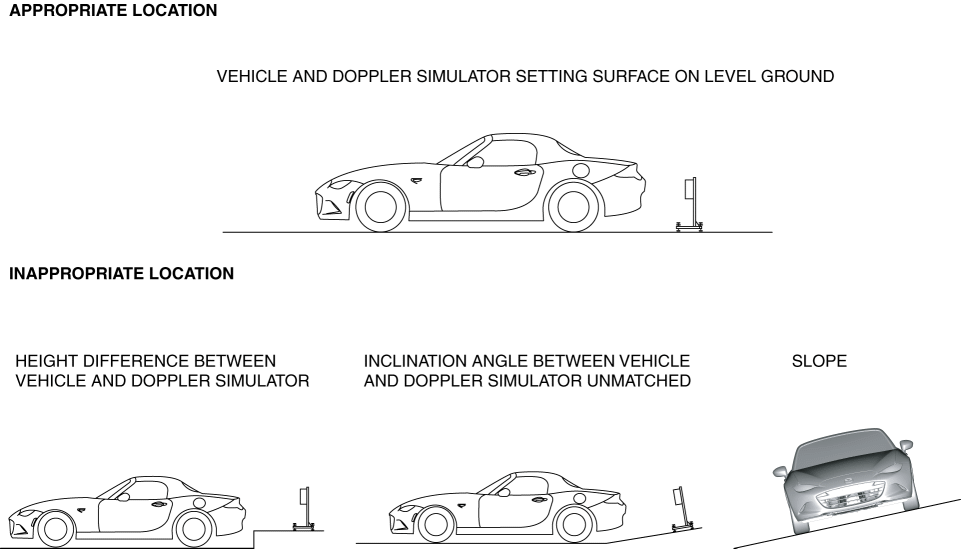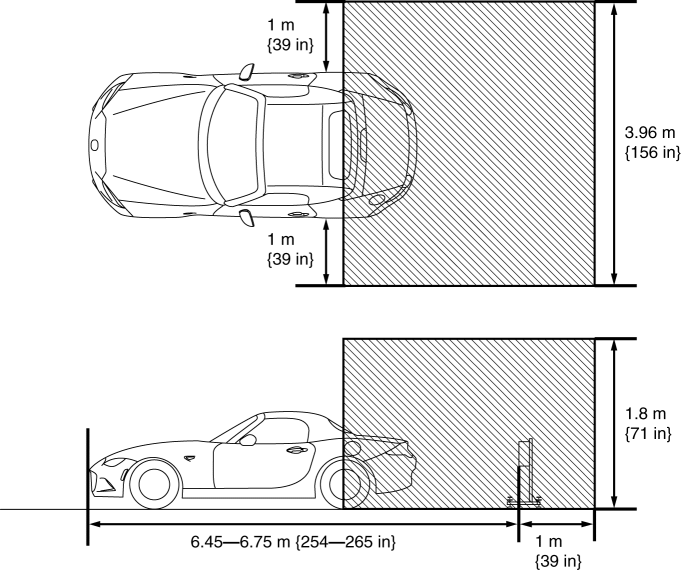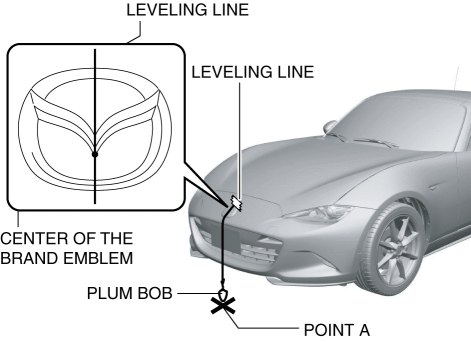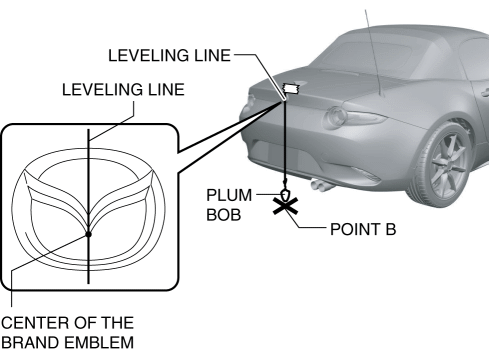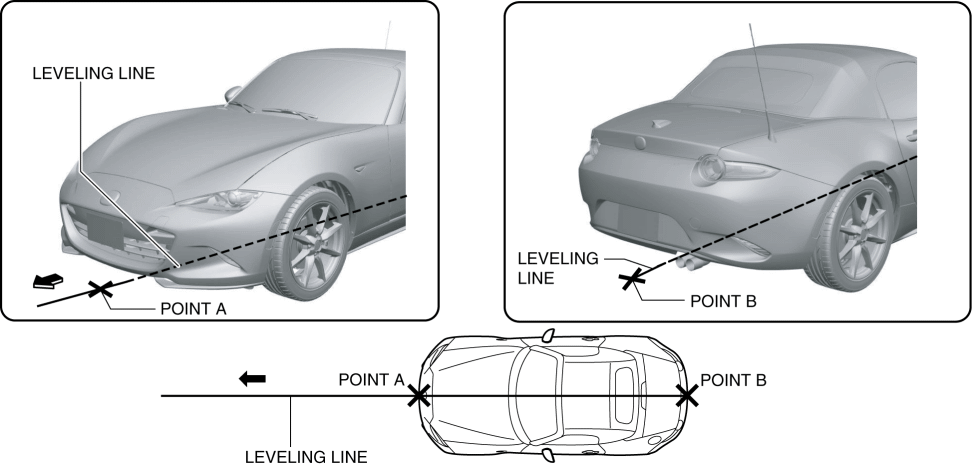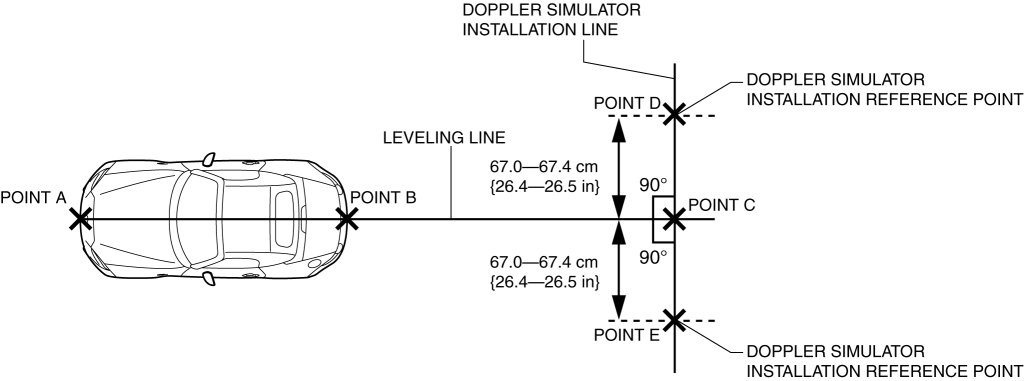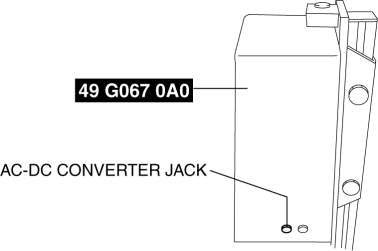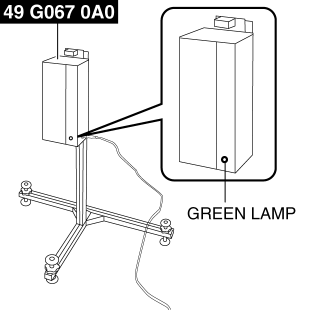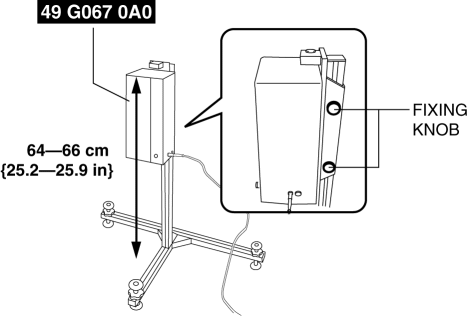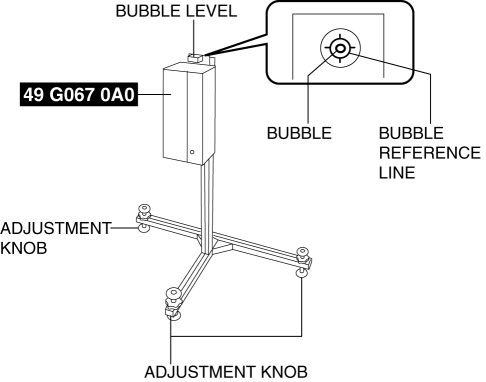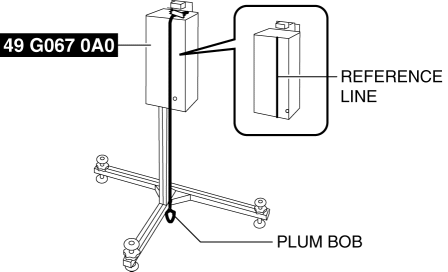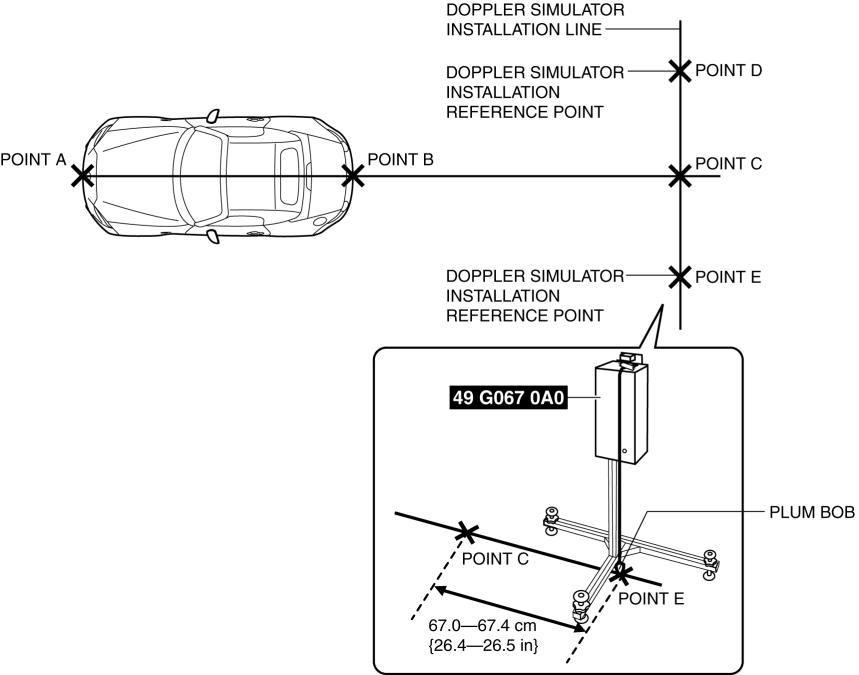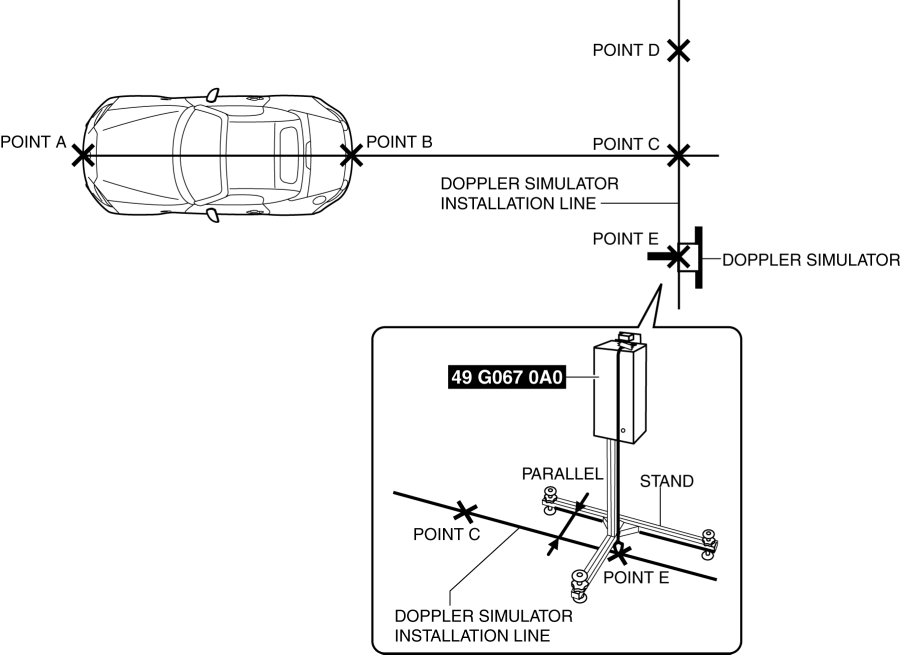BLIND SPOT MONITORING (BSM) RADAR AIMING
NOTE:
The blind spot monitoring (BSM) radar aiming procedure stores the radar angles in the blind spot monitoring (BSM) control module based on the forced emission of radar at a SST (Doppler simulator) and performing aiming based on the induced tolerance with the radar as it is currently installed and reflected from the SST (Doppler simulator).
The blind spot monitoring (BSM) radar aiming is performed when the blind spot monitoring (BSM) control module, blind spot monitoring (BSM) bracket or the rear bumper is replaced.
As there are two blind spot monitoring (BSM) control modules, one each on the left and right, radar aiming is performed for each side.
Radar aiming cannot be performed correctly if obstructions which interfere with radar emission are stuck on the blind spot monitoring (BSM) control modules or the rear bumper. Perform the following procedure before performing the radar aiming.
Verify that there is no water, mud, soiling, sticker adhesion, or repairs done using putty application on the surface of the rear bumper, and that there is no mud, soiling or scratches on the blind spot monitoring (BSM) control modules.
Radar aiming procedure
1. Empty the vehicle by having all occupants leave the vehicle and remove all the cargo except for the spare tire, jack and tools.
2. Adjust the air pressure of each tire to the specified value. (See WHEEL AND TIRE SPECIFICATION.)
3. Move the vehicle to level ground.CAUTION:
4. Verify that there are no obstructions which interfere with radar emissions such as metal objects in the radar emission area shown in the figure.CAUTION:
If the radar aiming is performed in the shaded area show in the figure with obstructions such as covered drain gutters in the floor or other metal reflective objects, it could result in the radar aiming not being performed correctly. Move all obstructions out of the area, and when performing the radar aiming, do not have personnel standing in the area.
5. Perform the DTC inspection for the blind spot monitoring (BSM) control module using the M-MDS and verify that no DTCs are displayed. (See DTC INSPECTION [BLIND SPOT MONITORING (BSM) CONTROL MODULE].)NOTE:
If any DTCs are displayed, perform malfunction repair referring to the applicable DTC troubleshooting. (See DTC TABLE [BLIND SPOT MONITORING (BSM) CONTROL MODULE].)
6. Adjust the SST (plum-bob) so that it is aligned with the center of the brand emblem, determine the center position at the front of the vehicle, and mark the center position (point A) on the floor surface.NOTE:
The center of the brand emblem indicates the center position of the vehicle.
7. Adjust the SST (plum-bob) so that it is aligned with the center of the brand emblem, determine the center position at the rear of the vehicle, and mark the center position (point B) on the floor surface.NOTE:
The center of the brand emblem indicates the center position of the vehicle.
8. Secure the end of the leveling line over point A.NOTE:
Use a commercially-available leveling line.
9. Pull the unsecured end of the leveling line over the vehicle and to the rear and adjust it so that passes over point B.
10. Mark the line (position C) within the range of 6.45 ???6.75 m {254???265 in} from point A and in the direction rearward of the vehicle.
11. Mark the points (points D and E) (SST (Doppler simulator) installation reference points) 67.0???67.4 cm {26.4???26.5 in} from point C on the line which runs perpendicular to the vehicle center line (SST (Doppler simulator) installation reference point).
12. Pull the connected points D, C and E lines (SST (Doppler simulator) installation line).
13. Insert the SST (AC-DC converter) into the side of the SST (Doppler simulator) and turn on the power.NOTE:
14. Loosen the fixing knobs on the side of the SST (Doppler simulator) and adjust the height of the SST (Doppler simulator) so that the height is between 64???66 cm {25.2???25.9 in} from the floor.CAUTION:
If the knobs are loosened excessively, the SST (Doppler simulator) could fall and become damaged. Support the SST (Doppler simulator) with one hand while loosening the fixing knobs.
15. Level the SST (Doppler simulator) by turning the SST (Doppler simulator) adjustment knobs and adjust so that the leveling bubble is centered on the reference line.
16. Drop the SST (plum bob) to the floor along the reference line printed on the SST (Doppler simulator).
17. Align point D or point E with the end of the SST (plum bomb).
18. Align so that the SST (Doppler simulator) installation line and the SST stand (Doppler simulator) are level at the center of point D or point E.
19. Remove the SST (plum bob).
20. Perform the radar aiming using the M-MDS.
21. Connect the M-MDS to the DLC-2.
22. After vehicle identification, the following can be selected from the M-MDS initialization screen.
???Electrical???
"BSM Aiming"
23. Select either the left or right blind spot monitoring (BSM) control module and perform the radar aiming according to the instructions on the M-MDS screen.
24. Verify the M-MDS display.
If "Procedure completed successfully" is displayed
The radar aiming procedure is complete
If ???This test found error.??? Or, "Procedure not completed successfully" is displayed.
Perform an inspection according to the following table.
| Step |
Inspection |
Action |
|
| 1 |
|
Yes |
Go to the next step. |
| No |
Set the Doppler simulator in the correct position and perform the blind spot monitoring (BSM) radar aiming. |
||
| 2 |
INSPECT REAR BUMPER
|
Yes |
Replace the rear bumper and perform the blind spot monitoring (BSM) radar aiming procedure. (See REAR BUMPER REMOVAL.) (See REAR BUMPER INSTALLATION.) |
| No |
Go to the next step. |
||
| 3 |
VERIFY IF BLIND SPOT MONITORING (BSM) CONTROL MODULE OR BLIND SPOT MONITORING (BSM) BRACKET IS MIS-INSTALLED AND IF THERE IS DISTORTION TO VEHICLE INSTALLATION SURFACE
|
Yes |
Repair or replace the malfunctioning part and perform the blind spot monitoring (BSM) radar aiming procedure. |
| No |
Go to the next step. |
||
| 4 |
REPEAT BLIND SPOT MONITORING (BSM) RADAR AIMING
|
Yes |
The blind spot monitoring (BSM) radar aiming is completed. |
| No |
Replace the applicable blind spot monitoring (BSM) control module. (See BLIND SPOT MONITORING (BSM) CONTROL MODULE REMOVAL/INSTALLATION.) |
||
